On a Lazy Saturday and the Start of Spring: Khinkali (Georgian Soup Dumplings)
March 23, 2016
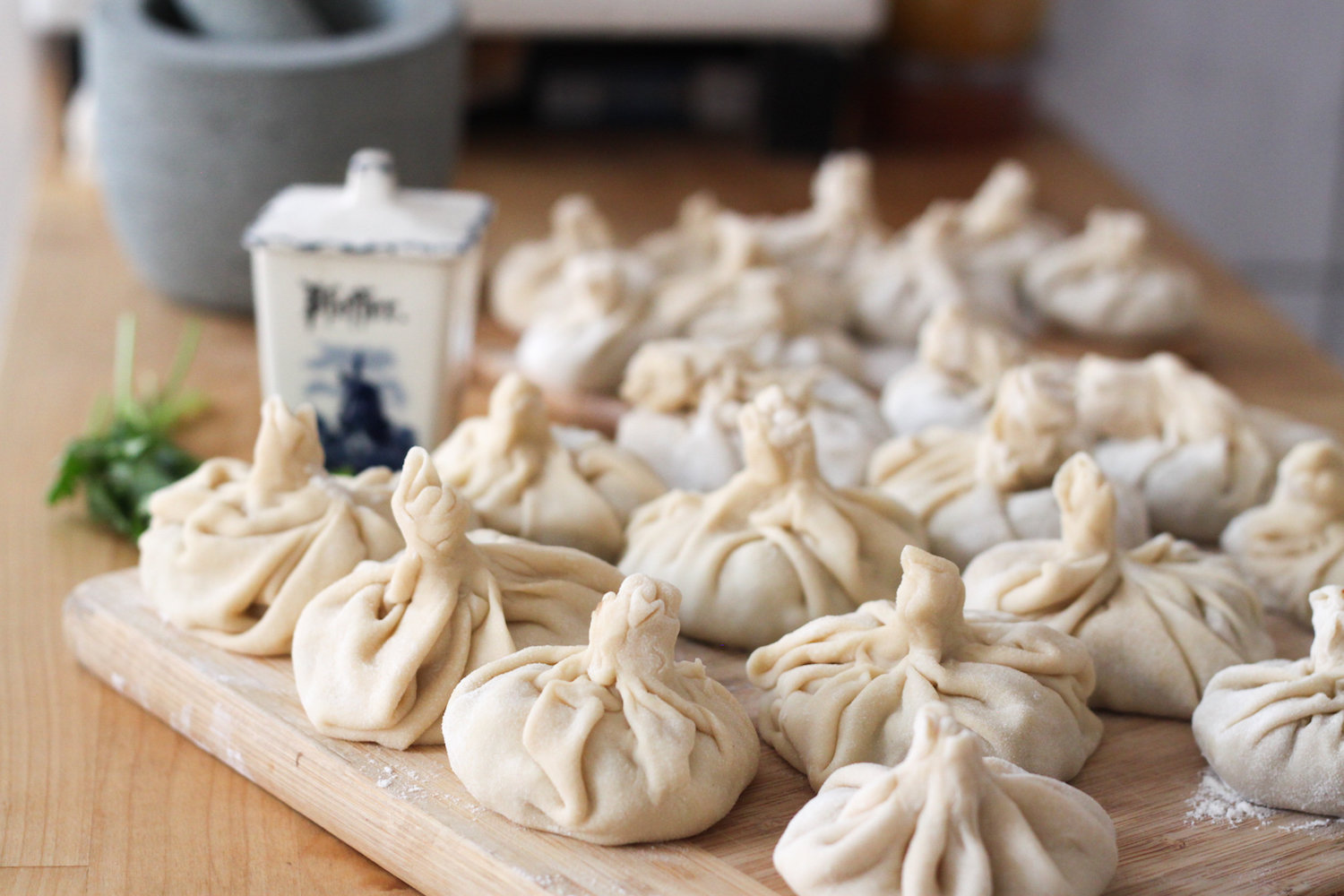
Spring is coming to Berlin, and the cold, wintry mountains of Georgia are starting to seem like a far-off memory. Of course, spring in Berlin is a relative thing. I’m still wearing my winter coat most days, and bright patches of hopeful blue have only pierced the overwhelming gray long enough to make me crave a picnic blanket in the sun decked with crustless sandwiches and glossy bunches of grapes.

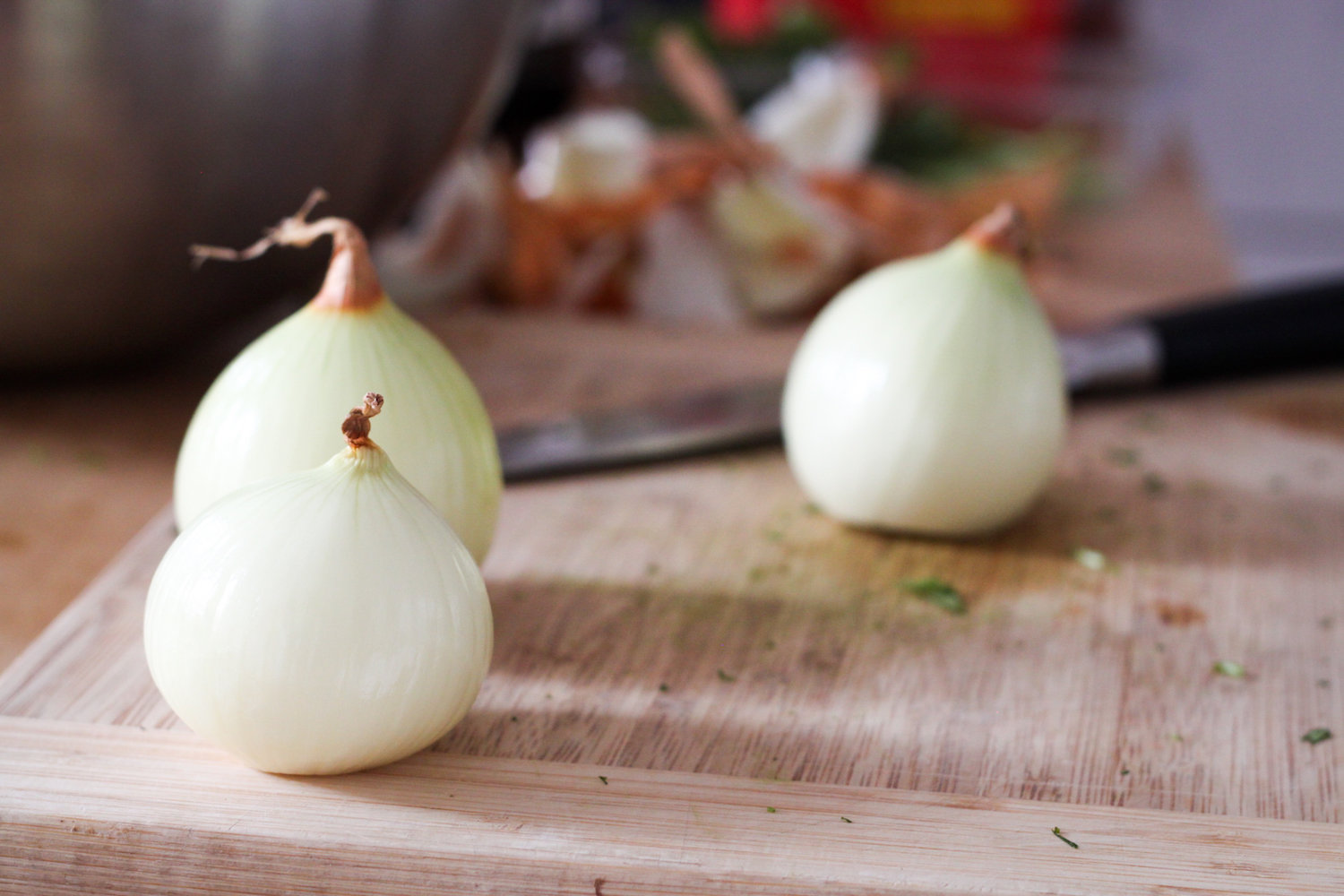
On the last of these pretty blue days, I woke early to the sun shining through the windows and felt inspired. I haven’t been feeling that way a lot lately. I’ve taken on too much, and even weekends, I wake up, drink my coffee, and wonder what to tackle next. It’s exhausting, to work in the mornings before going to my job, to work in the evenings when I come home, to keep working on the weekends. I miss doing things that have no ulterior motive or eke me closer to a goal.
It’s hard when my home is a hive of productivity. My computer, my papers, the broom and mop – all grin at me with sharp, consuming teeth.
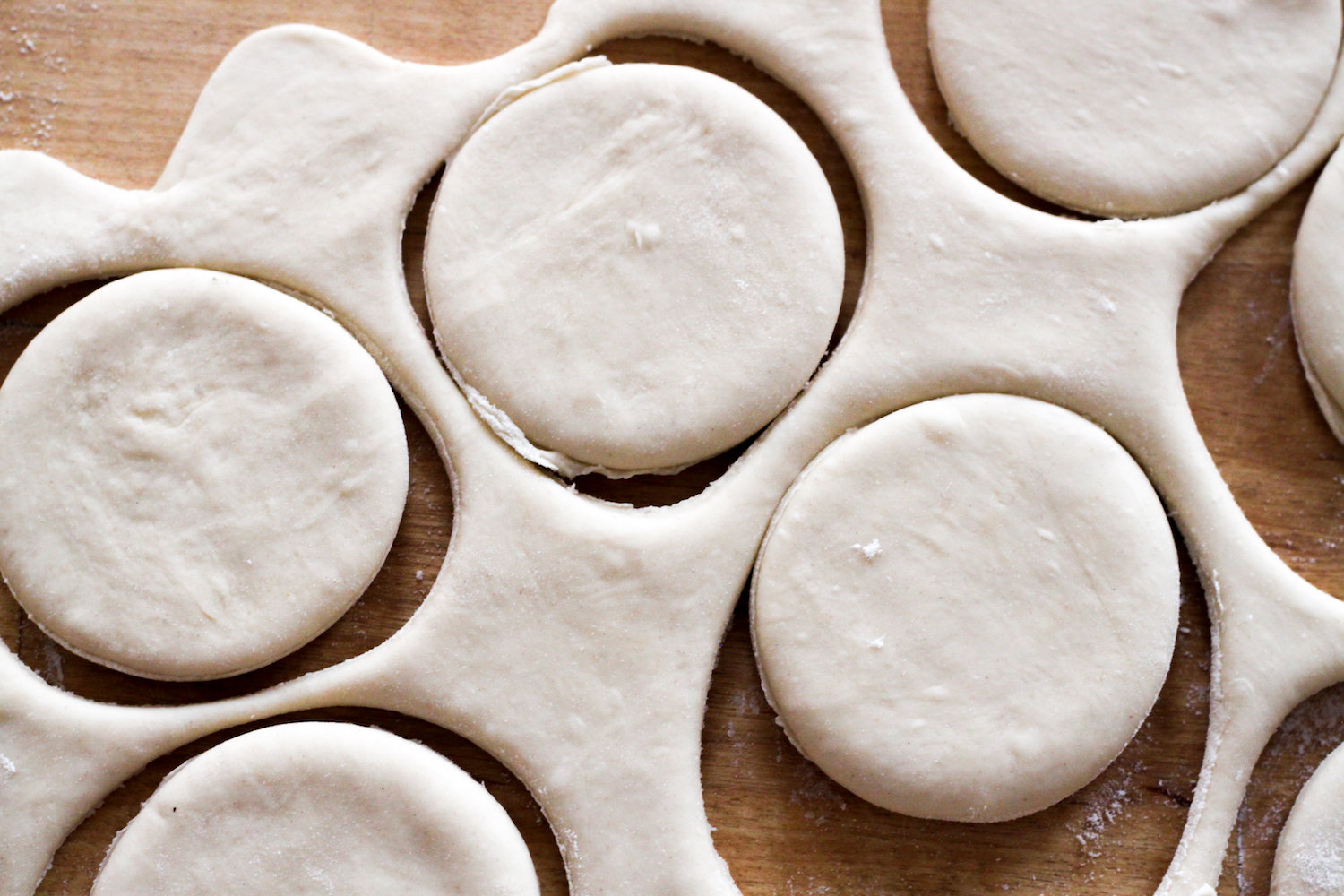
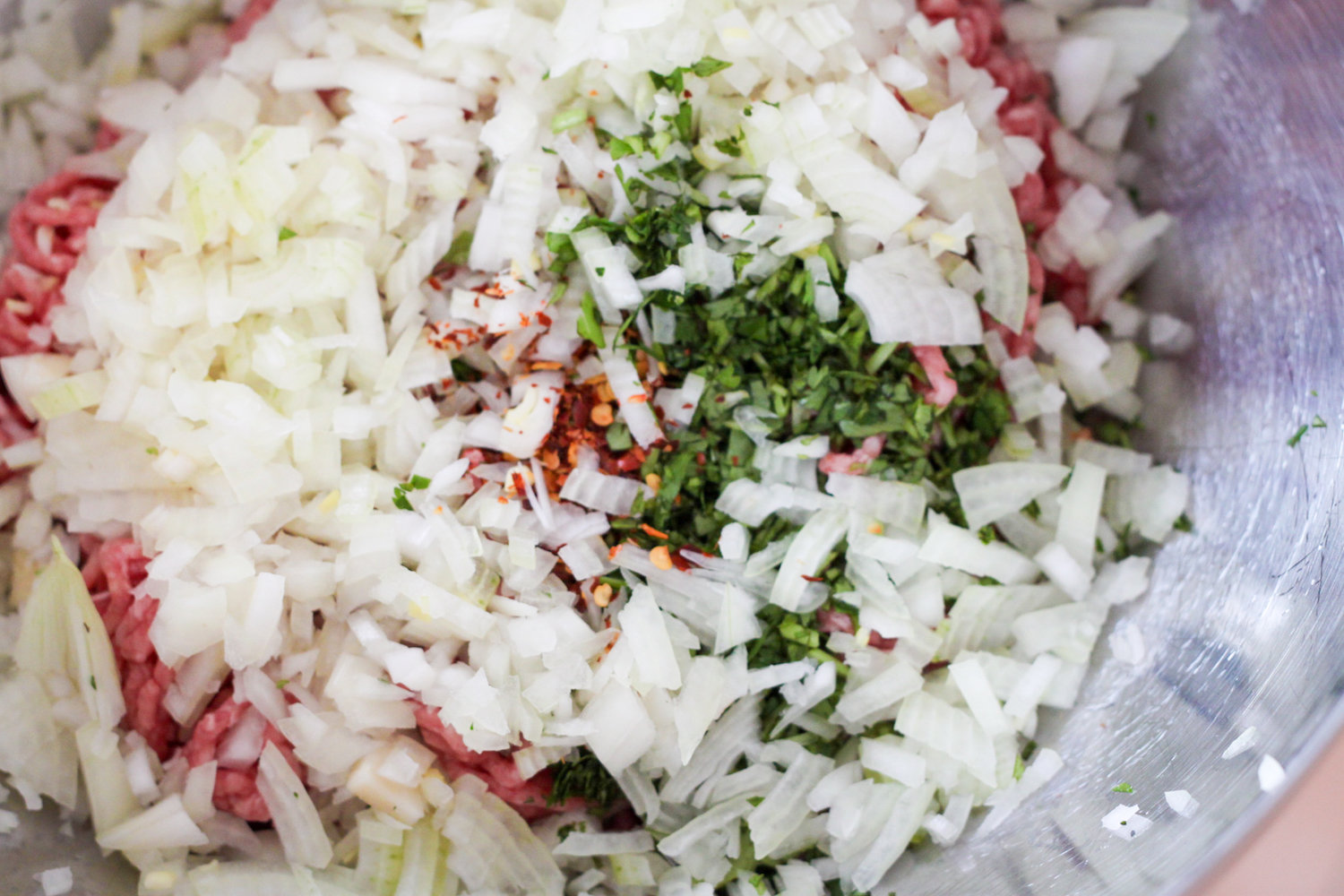
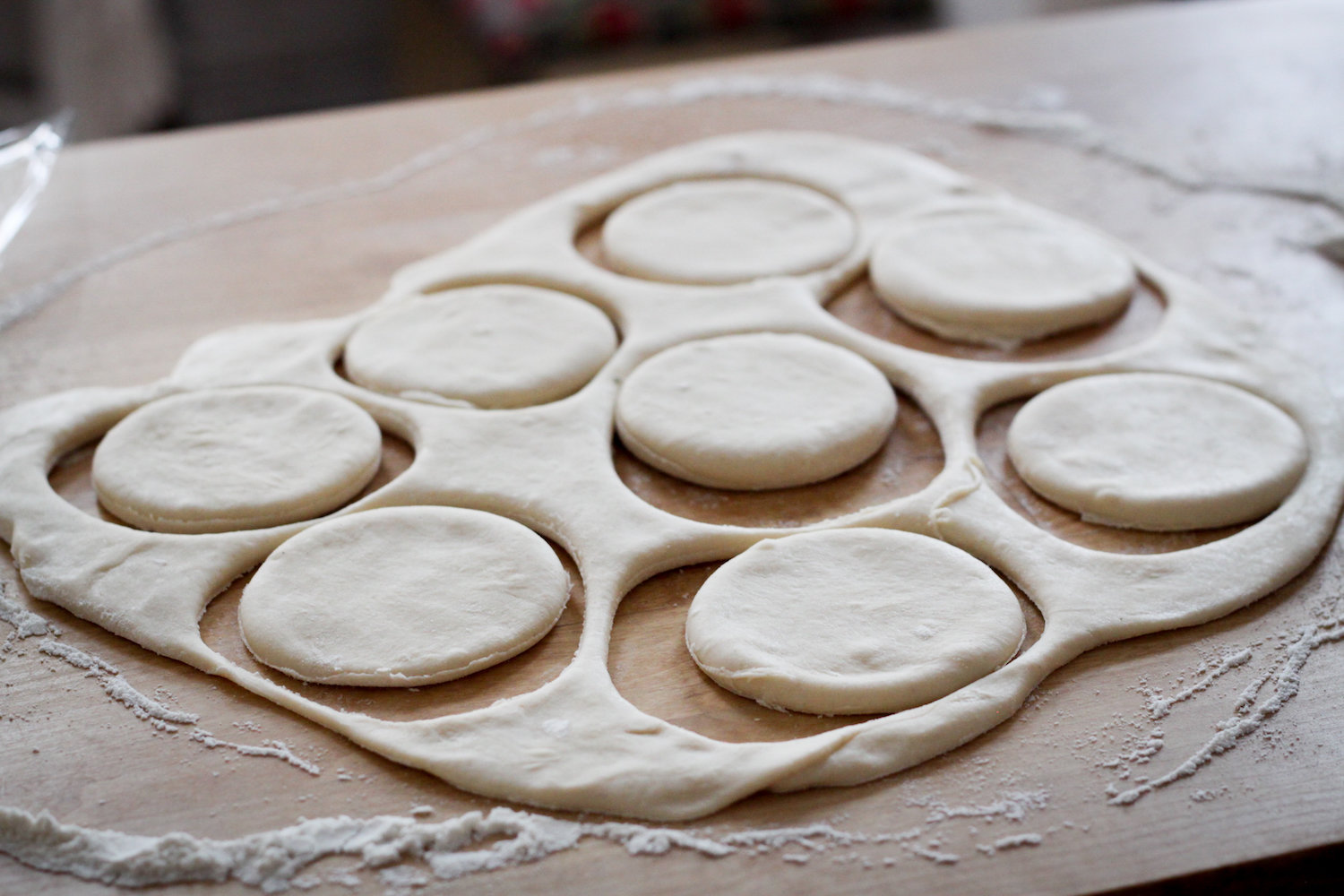
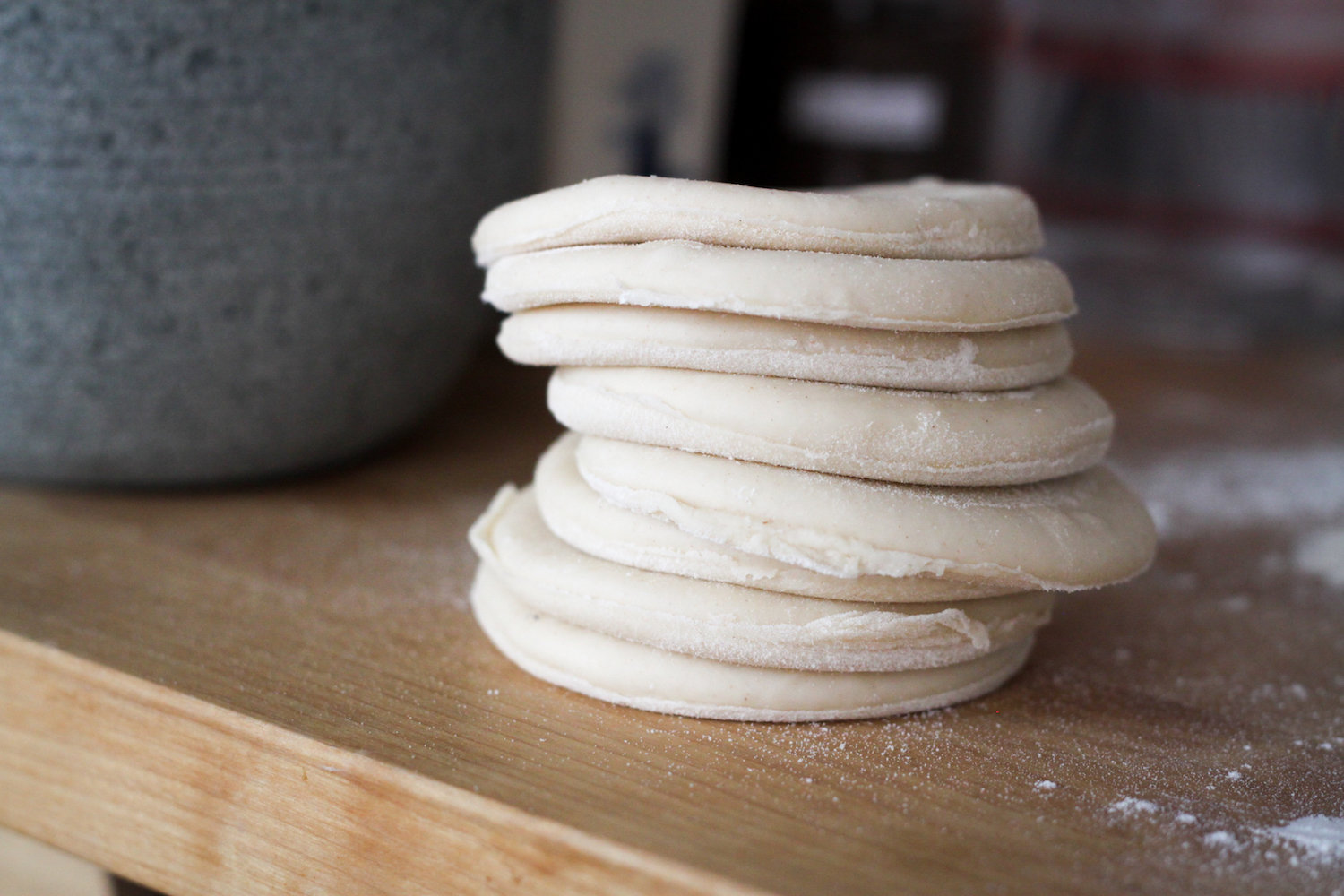
What a blessing to wake up on Saturday morning and feel freed by the sunshine. I wanted nothing more than to wrap an apron around my waist and cook – preferably something new, preferably something time-consuming – just to flaunt how free I felt.
I put some podcasts on to play, and while David slept late into a lazy Saturday, I made dumplings.
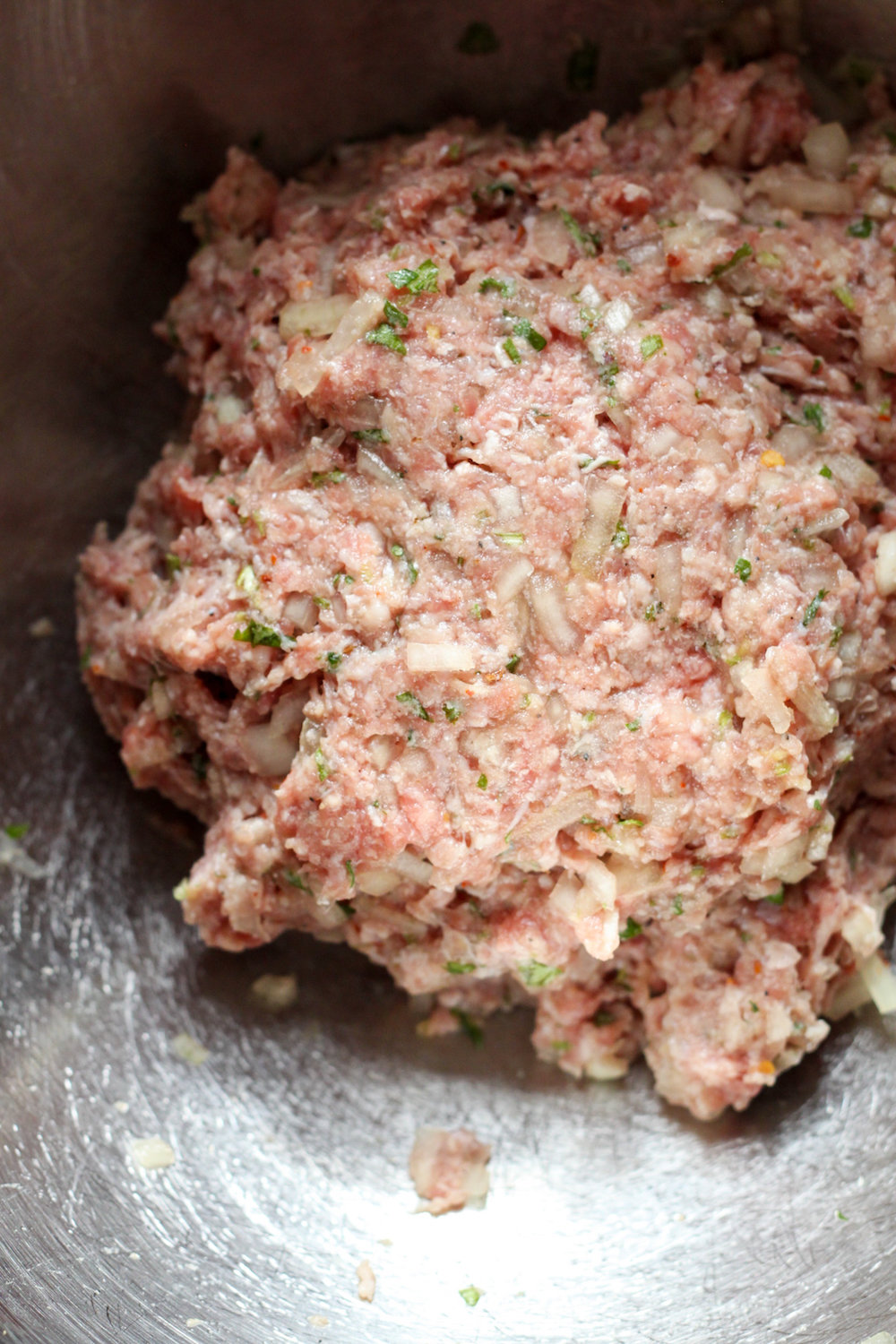

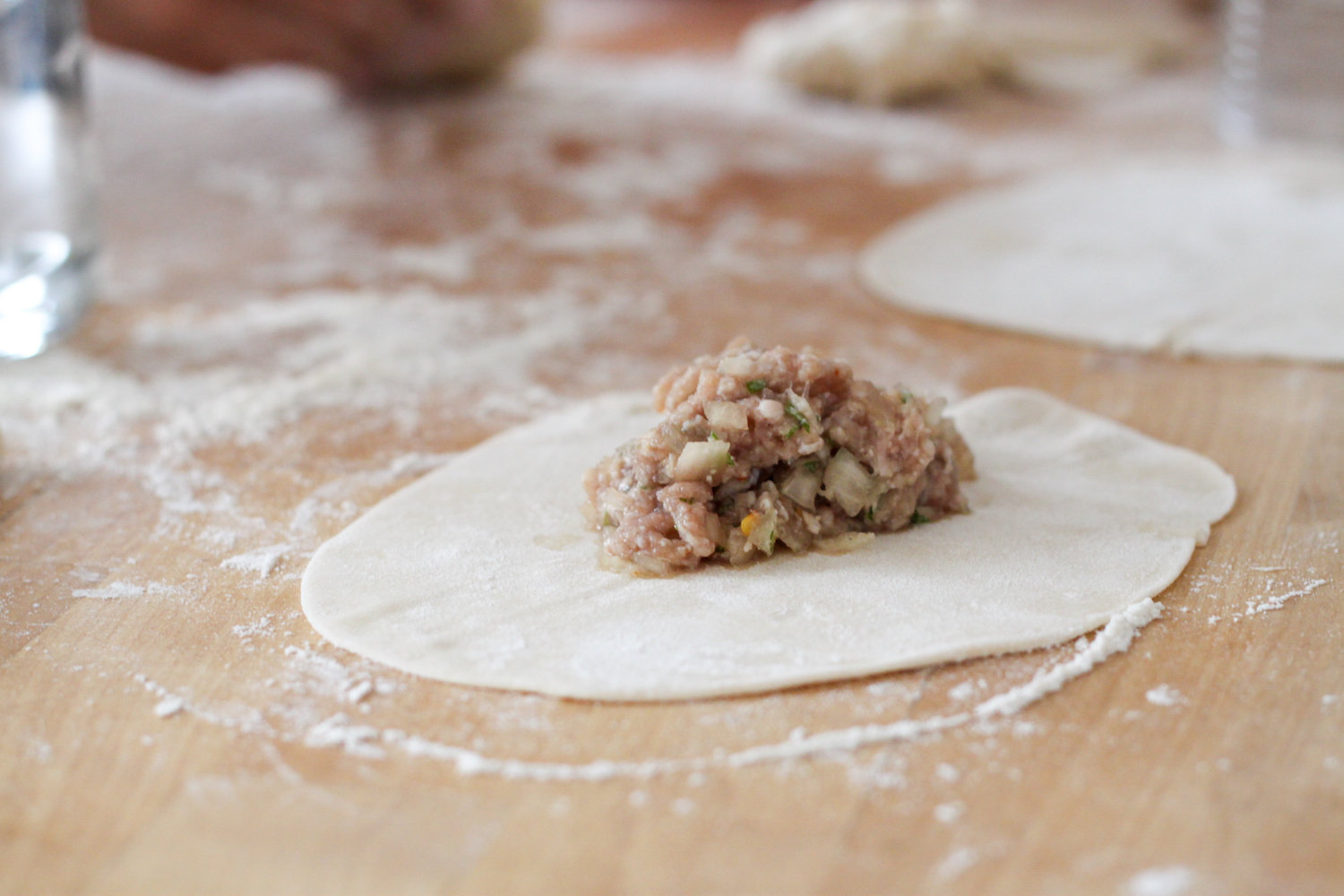
One of the best things we ate in Georgia were khinkali, stuffed soup dumplings. The classic dumplings are filled with minced meat like beef, pork, or lamb, herbs, and onion. Others are filled with potato or cheese. We even had tasty, tiny khinkali bursting with caramelized onion and mushroom at a dumpling house overlooking the Kura River and washed them down with crisp, golden pilsner.

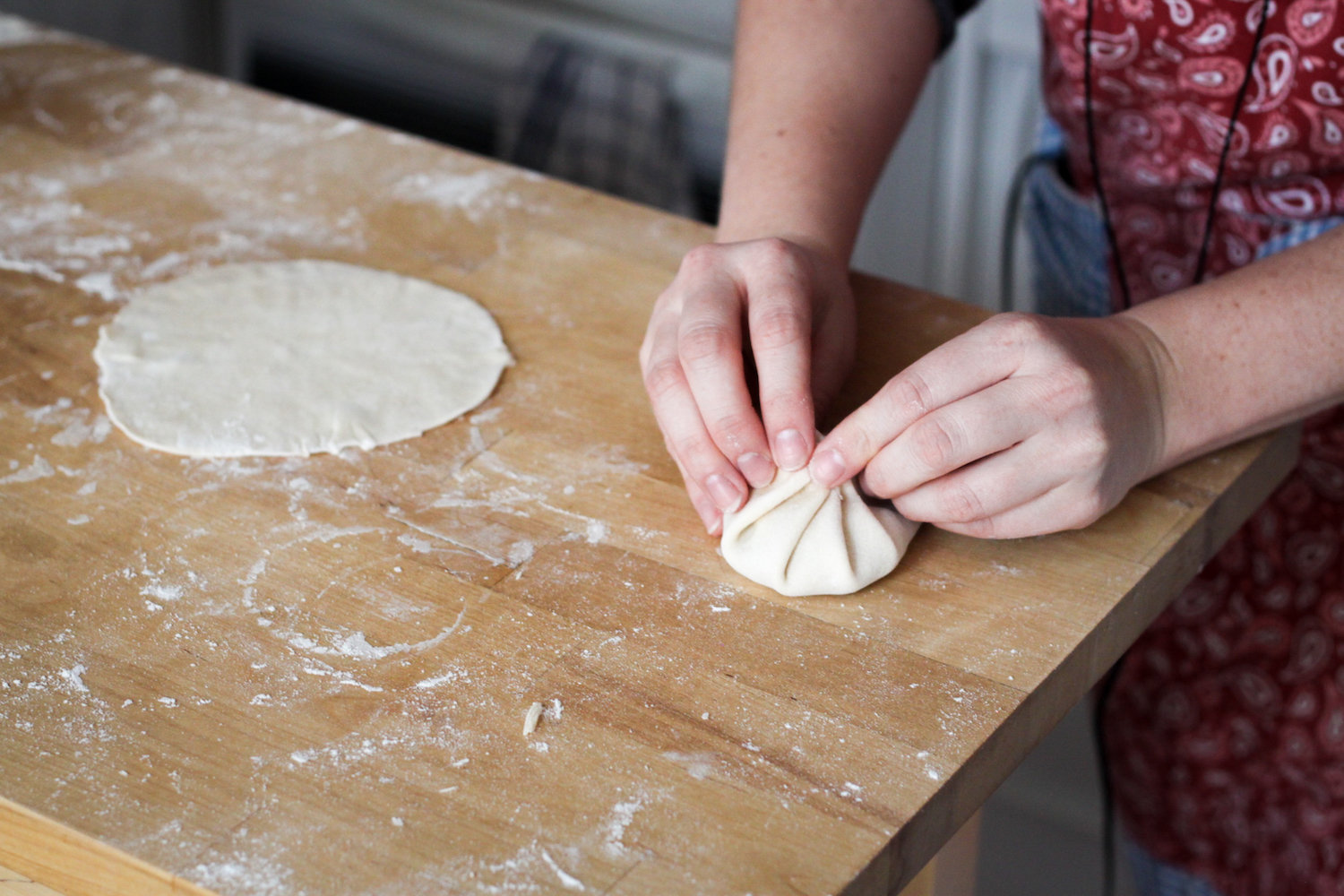
The dumplings are garnished with nothing more than generous shakes of black pepper and are eaten without utensils. You pick one up by its knotted top, or its k’uch’i (belly button, in Georgian), then bite a hole in a corner of the dough and suck out the aromatic broth before chomping down on the rest.
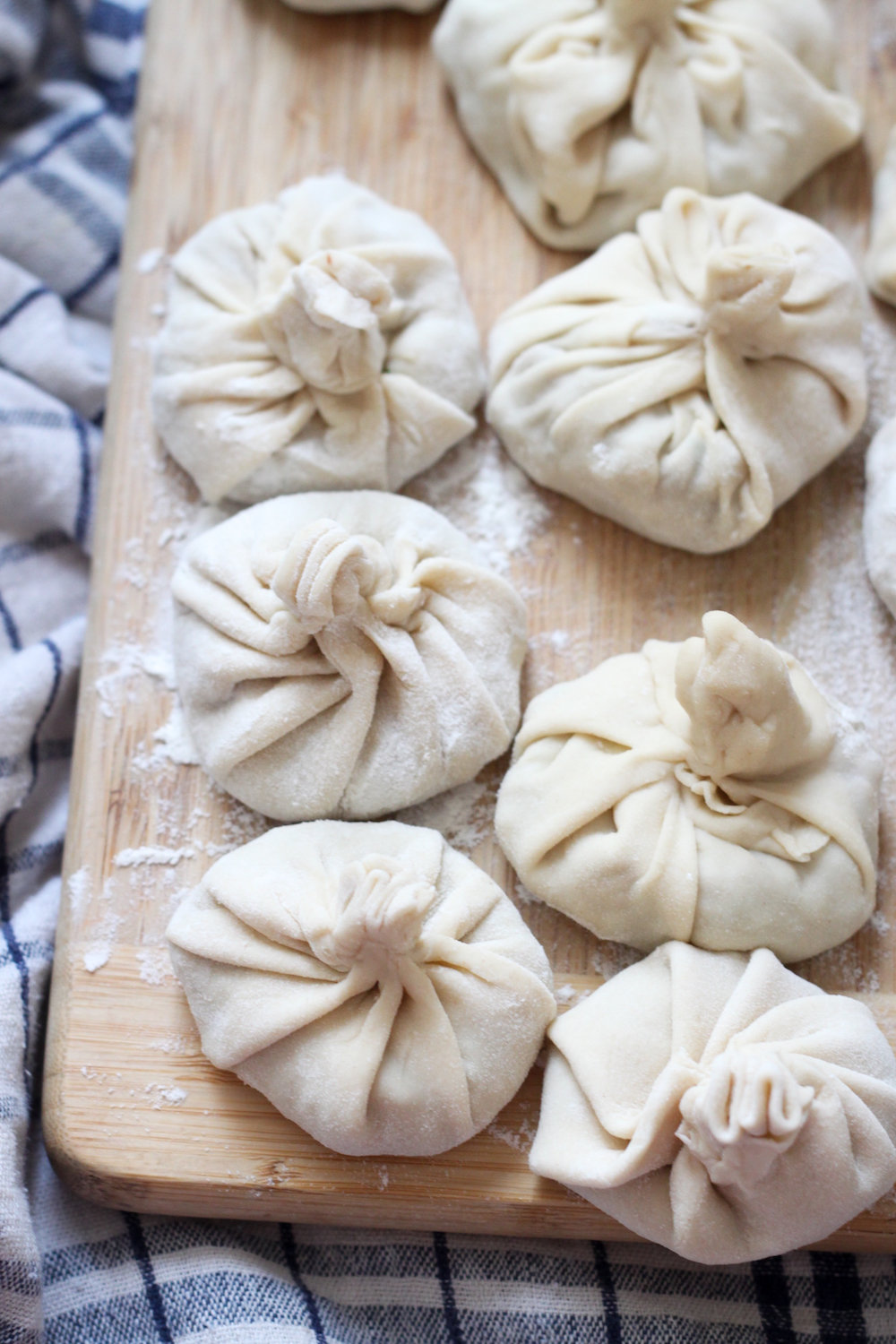
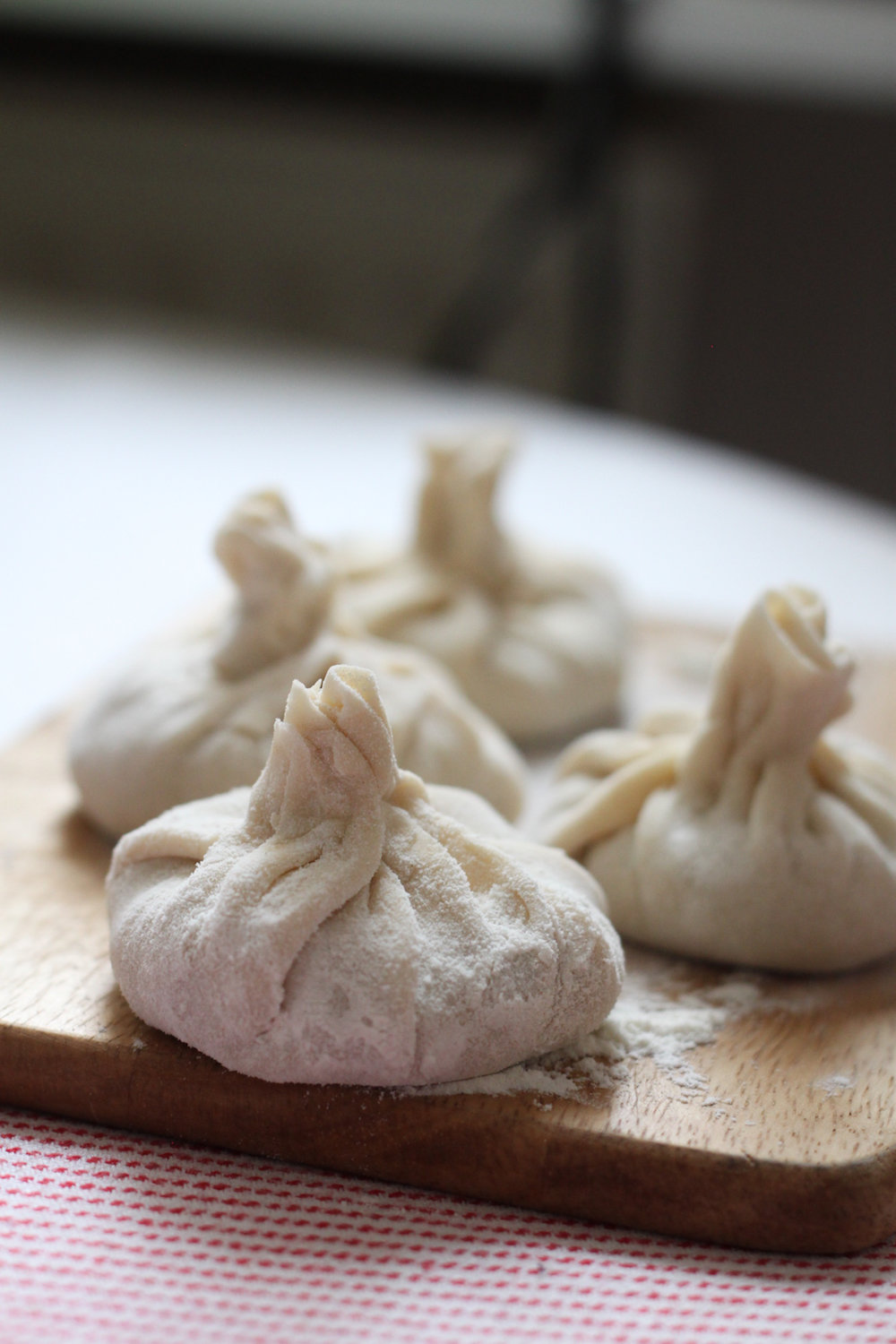
It’s no secret I have a thing for dough. I love the repetitive, rapturous action of knuckling into its soft, fleshy folds, bending it into something pliable and smooth. I lost myself in dumpling dough – kneading it and letting it rest, rolling it out and stacking the fat rounds, then rolling out those rounds into thin dumpling wrappers.

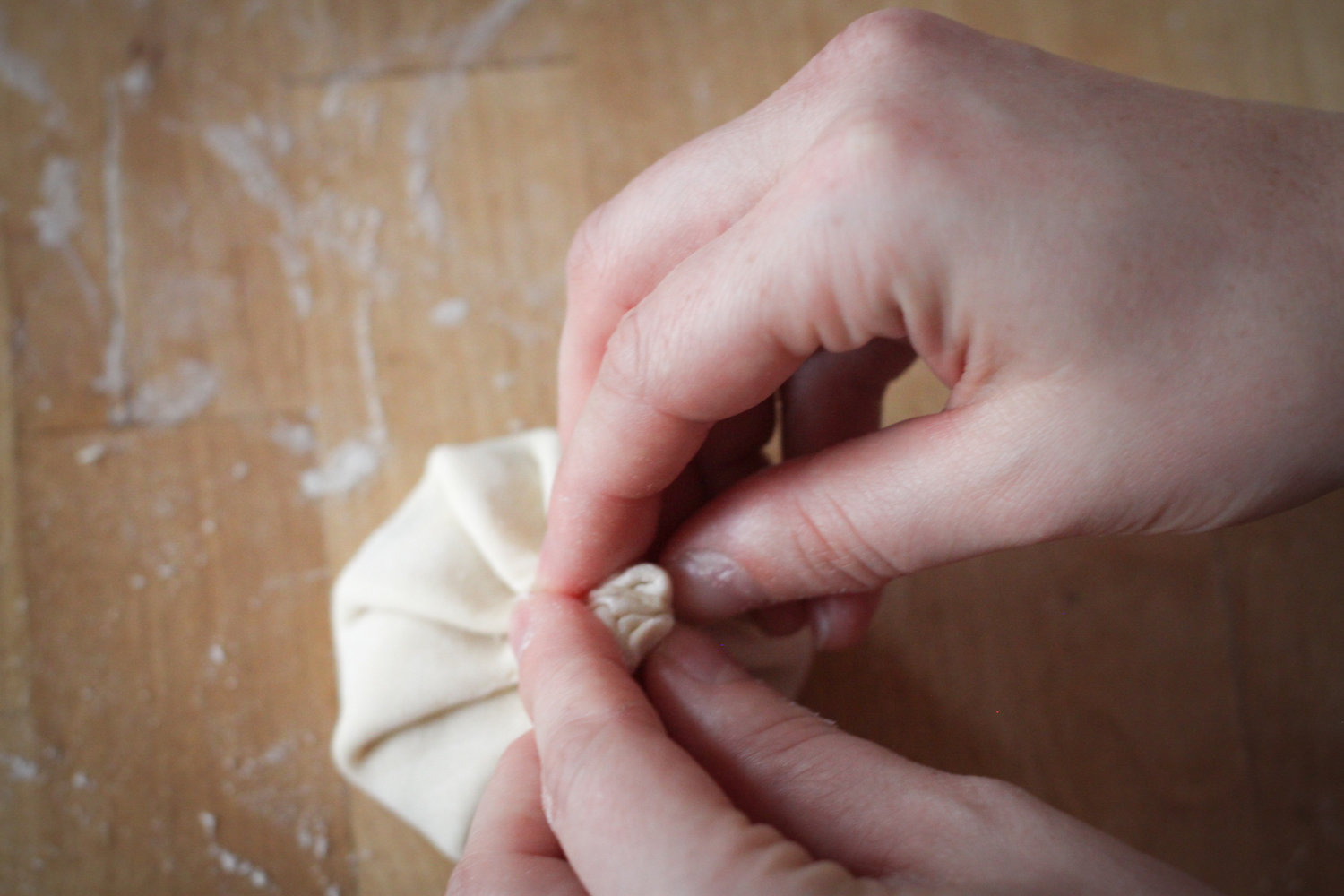
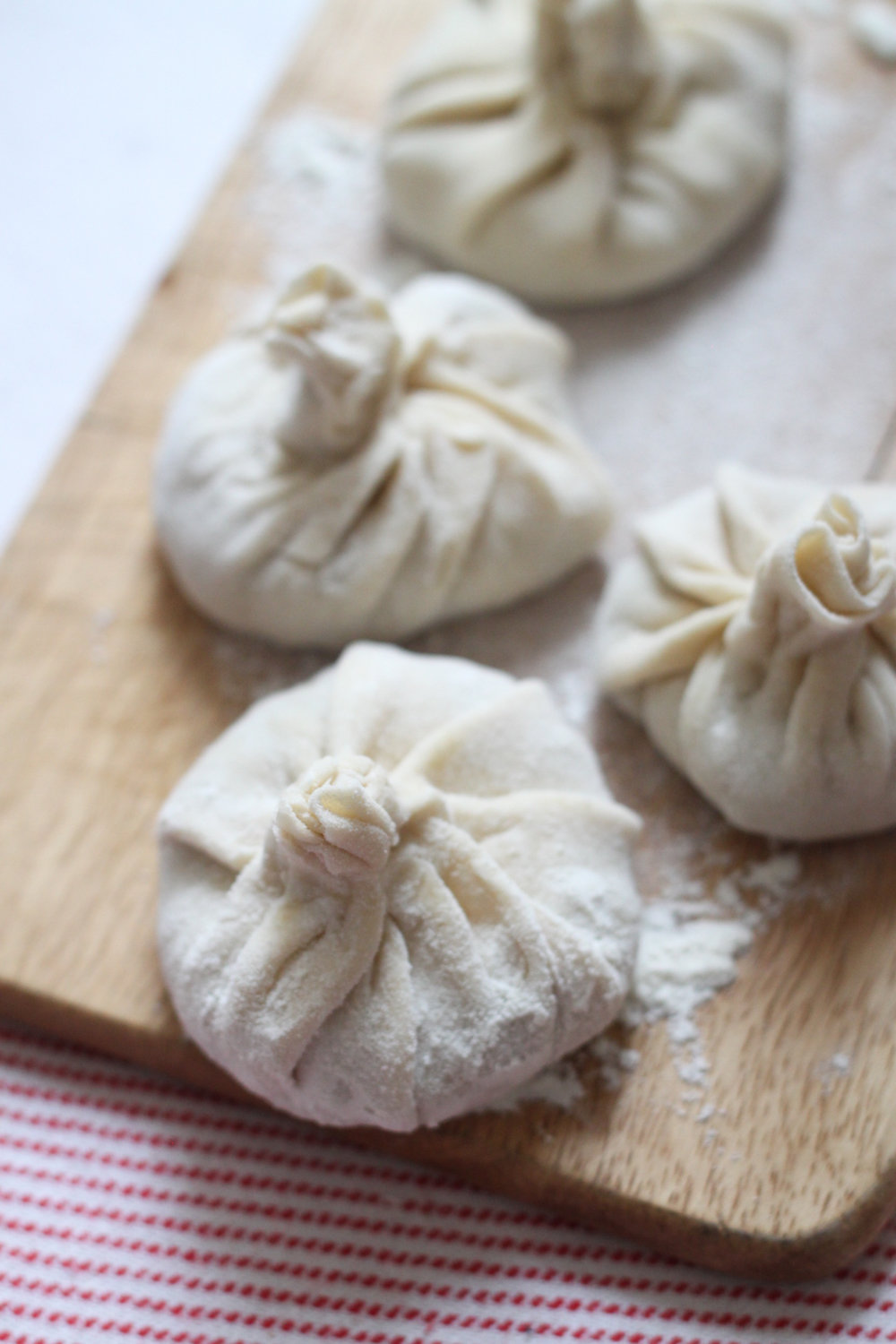
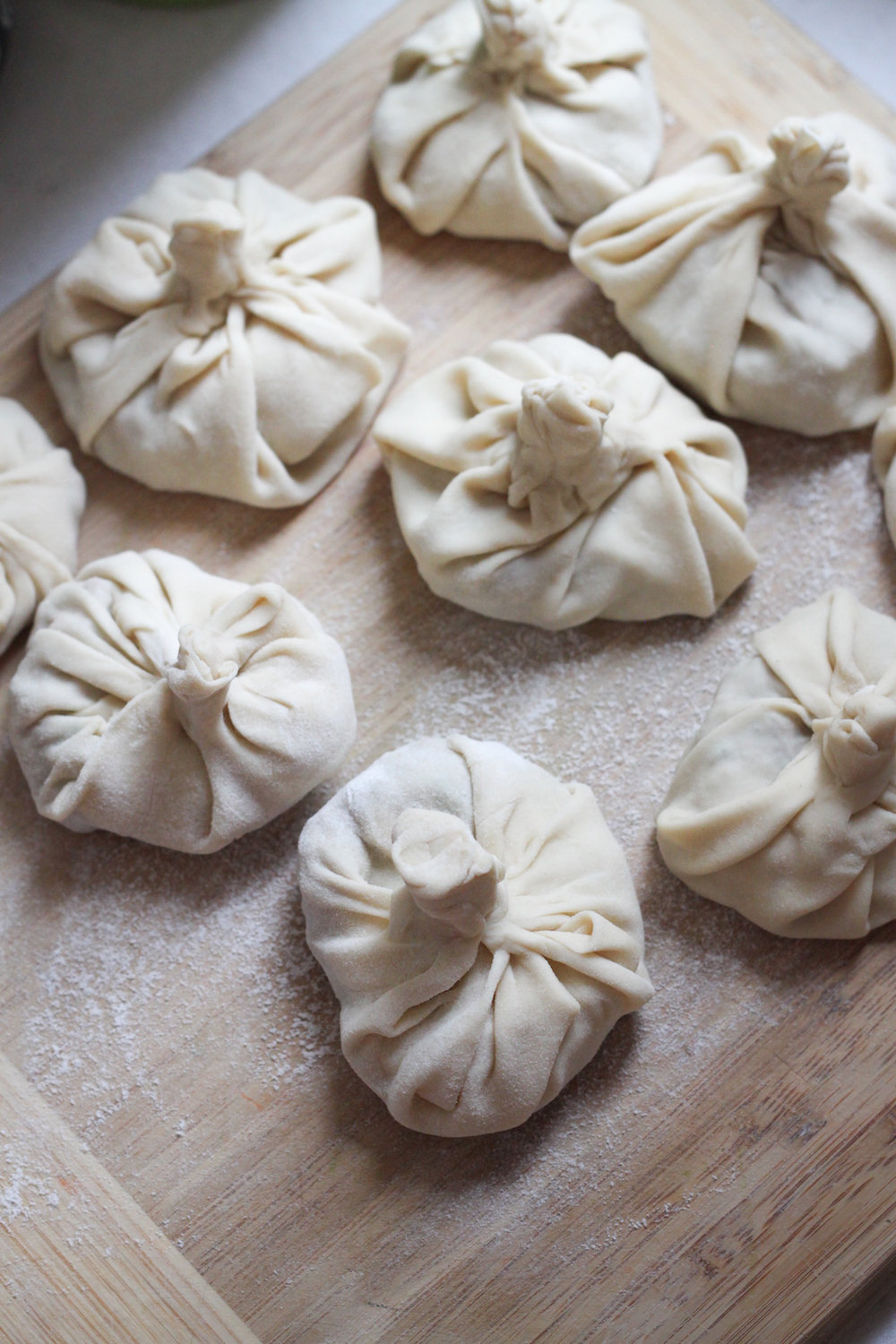
I was halfway through the process when David walked into the kitchen, bleary-eyed and sluggish with sleep. He started rifling through my pile of wrappers. “You know all the bottom ones are stuck together, right?” he asked, pulling apart two very gluey slips of dough. I was busy disentangling two rounds myself. “Could be I should have been more generous with the flour,” I replied, thinking that maybe stacking all the wrappers wasn’t such a good idea after all.
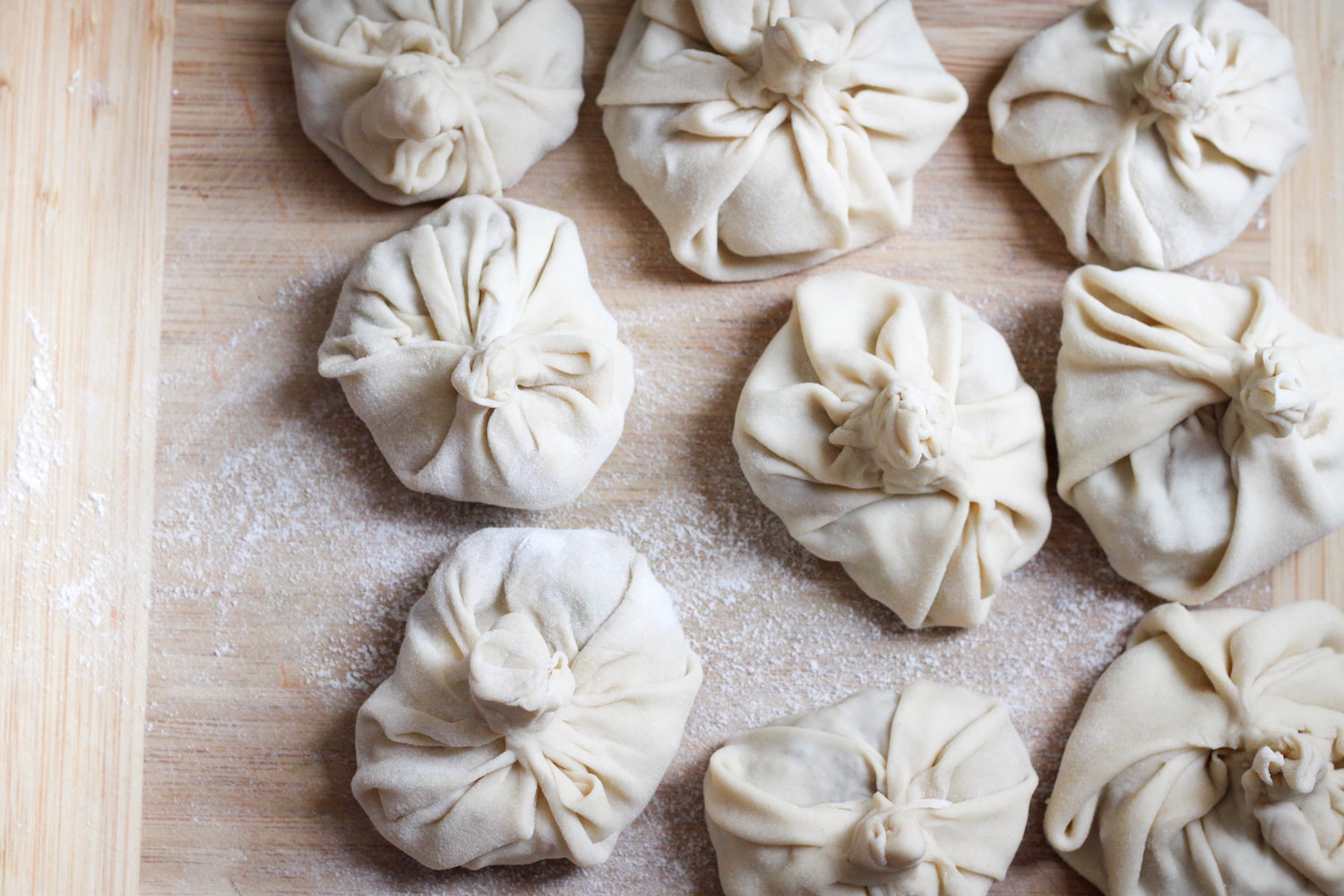


I was grateful David had chosen just that moment to wake up, and I put him to work, reshaping the dough and rolling it out again, while I started wrapping khinkali before the rest of the dough could decide to congeal.
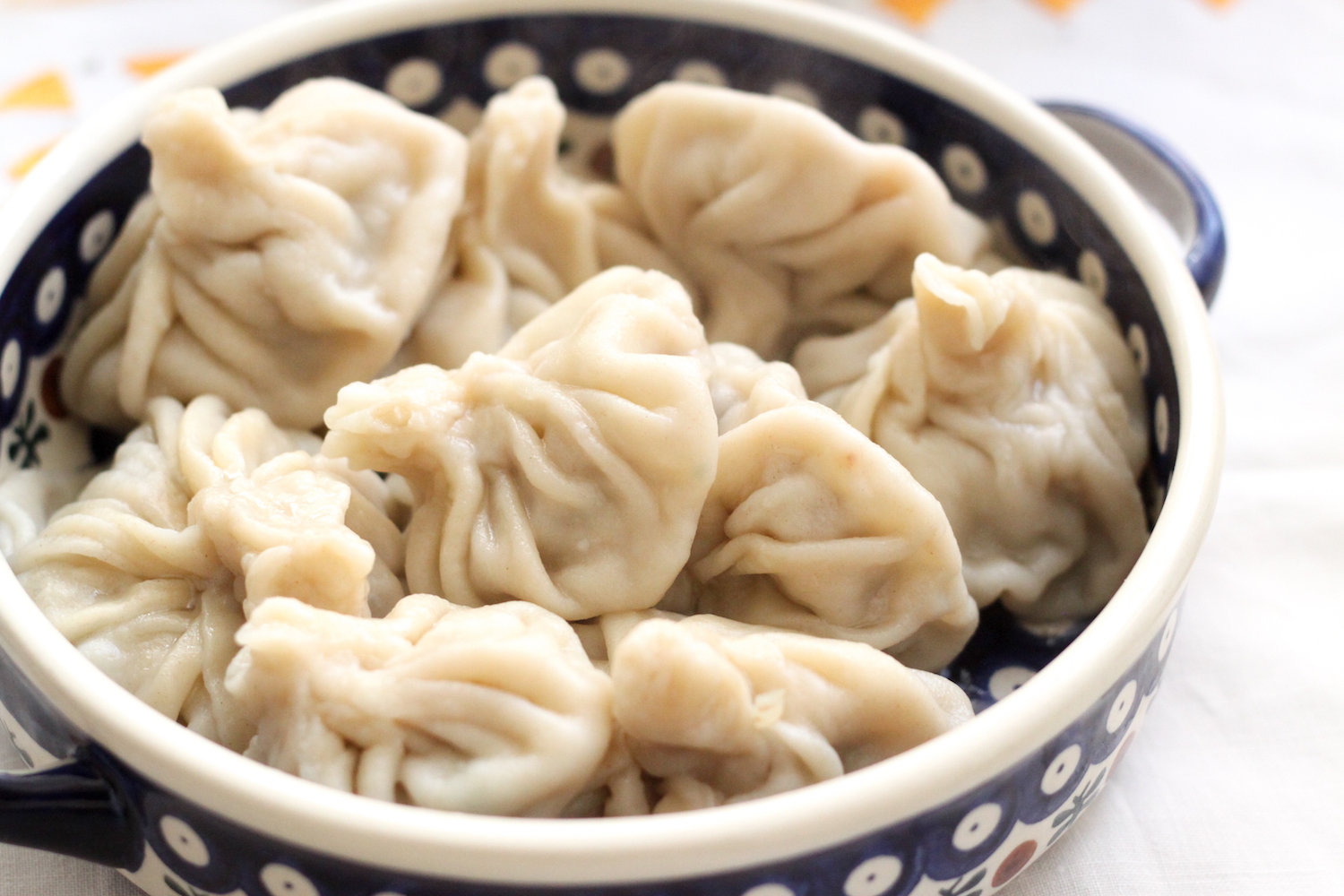
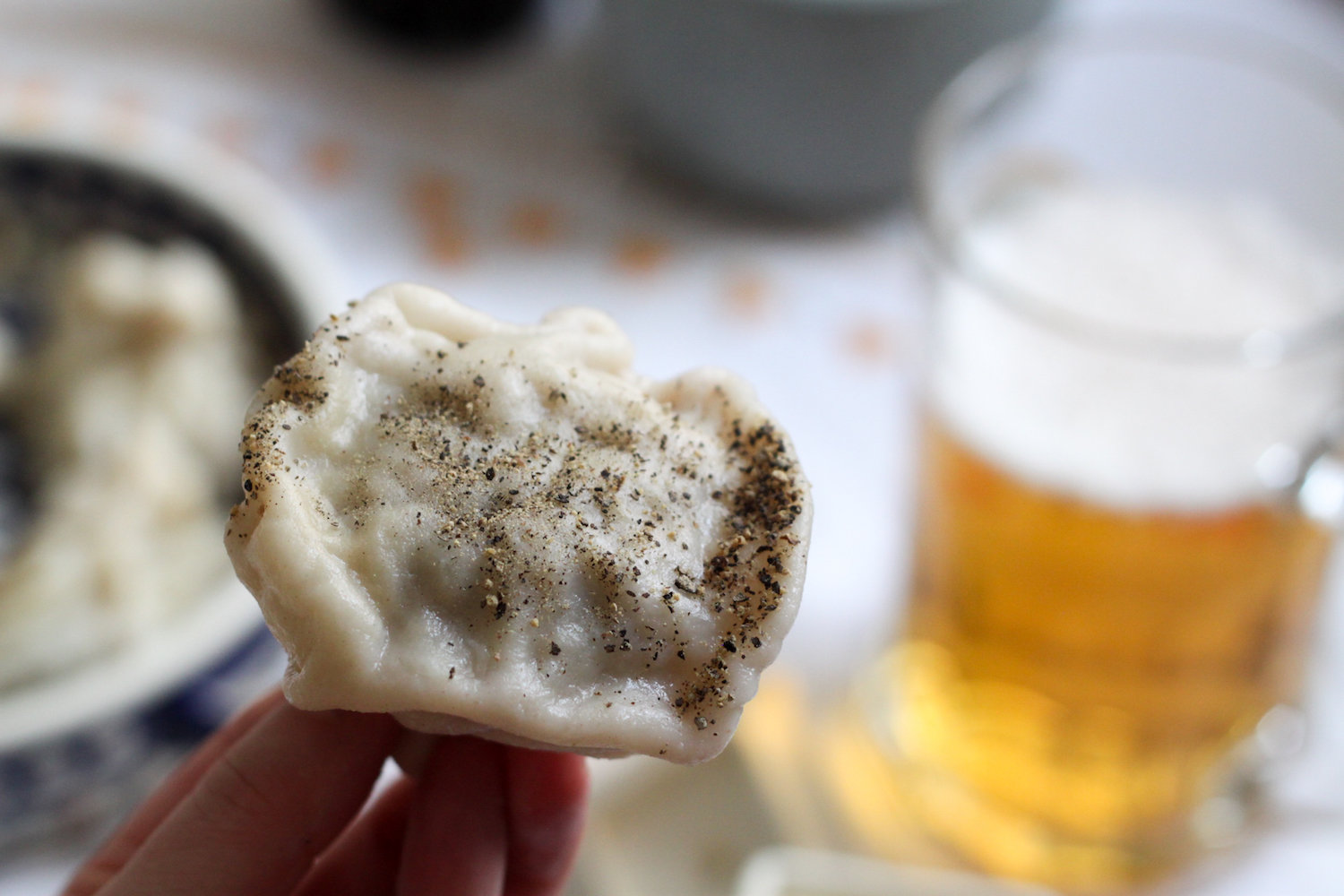
A khinkali is not an easy thing to knot. In Georgia, the dumplings looked like knobs of garlic with clean and even pleats of glossy dough. Nineteen, apparently, is the number of folds to strive for. I was lucky to end up with pleats at all, since none of my rounds were rolled out in perfect circles and I may have rolled the dough too thin in all my zeal. But for a first attempt, they weren’t so bad. I found a rhythm, lifting, folding, pinching, and was pleased with how sweet the last few little dumplings sat.
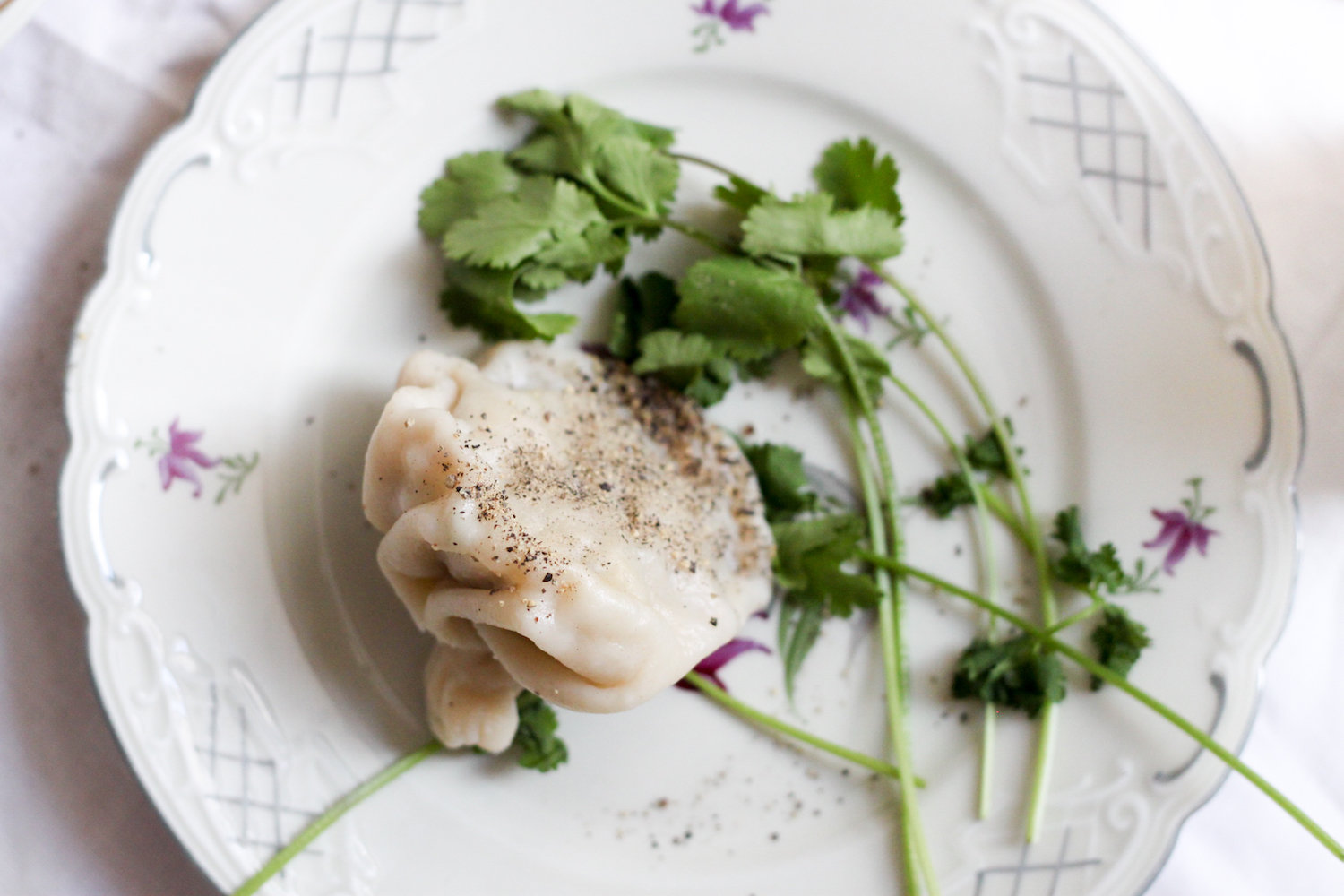
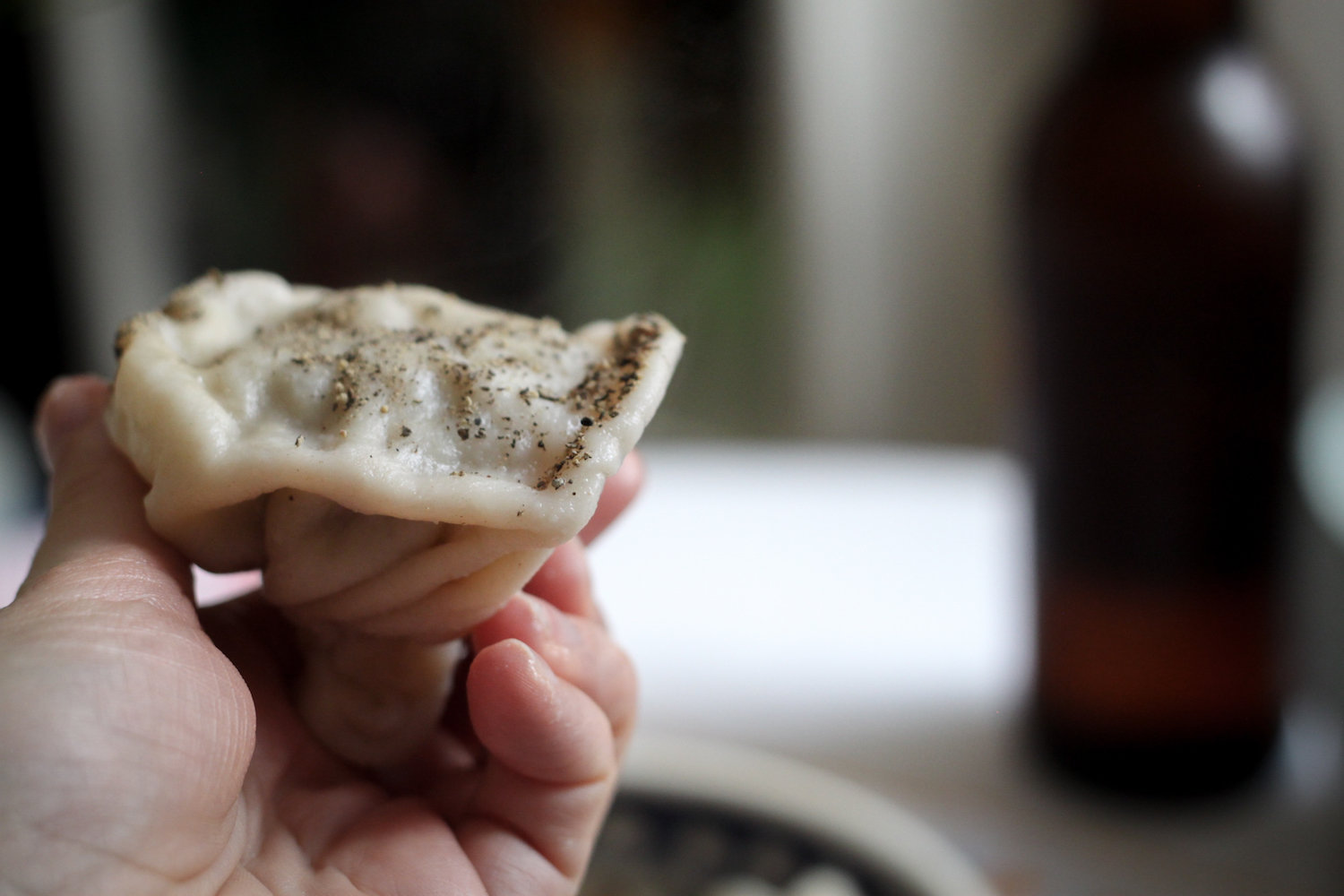
The sun was high in the sky by the time we finished lining up our rows of dumplings, ready to be plopped in a pot of boiling water until they wobbled to the surface like squat buoys bobbing in the ocean. But I had nowhere else to be, for once, and nothing else to do. So for lunch, we poured ourselves two big, cold mugs of beer and sat down with the steaming plate of khinkali and the sunshine streaming over the whole tableaux.


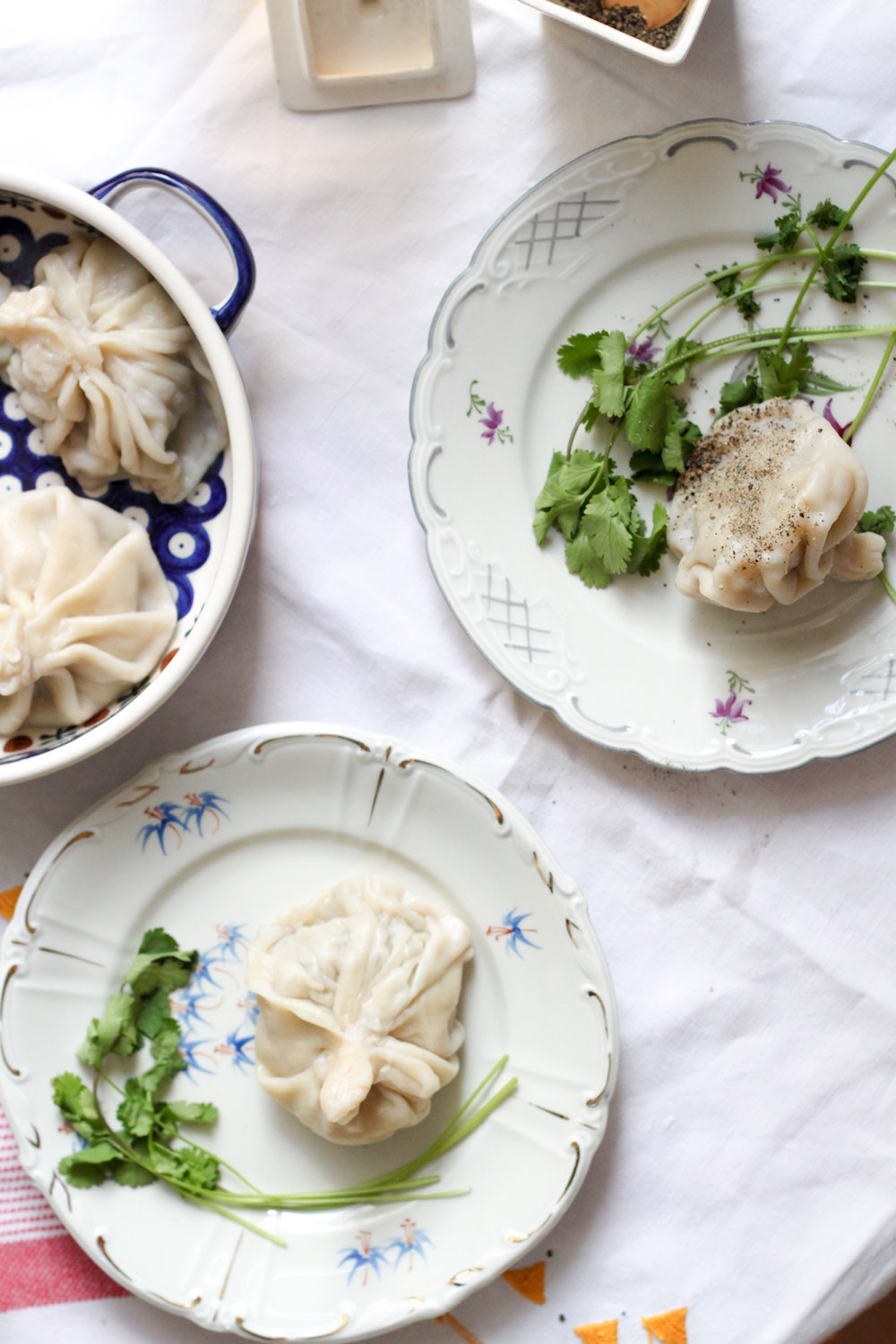
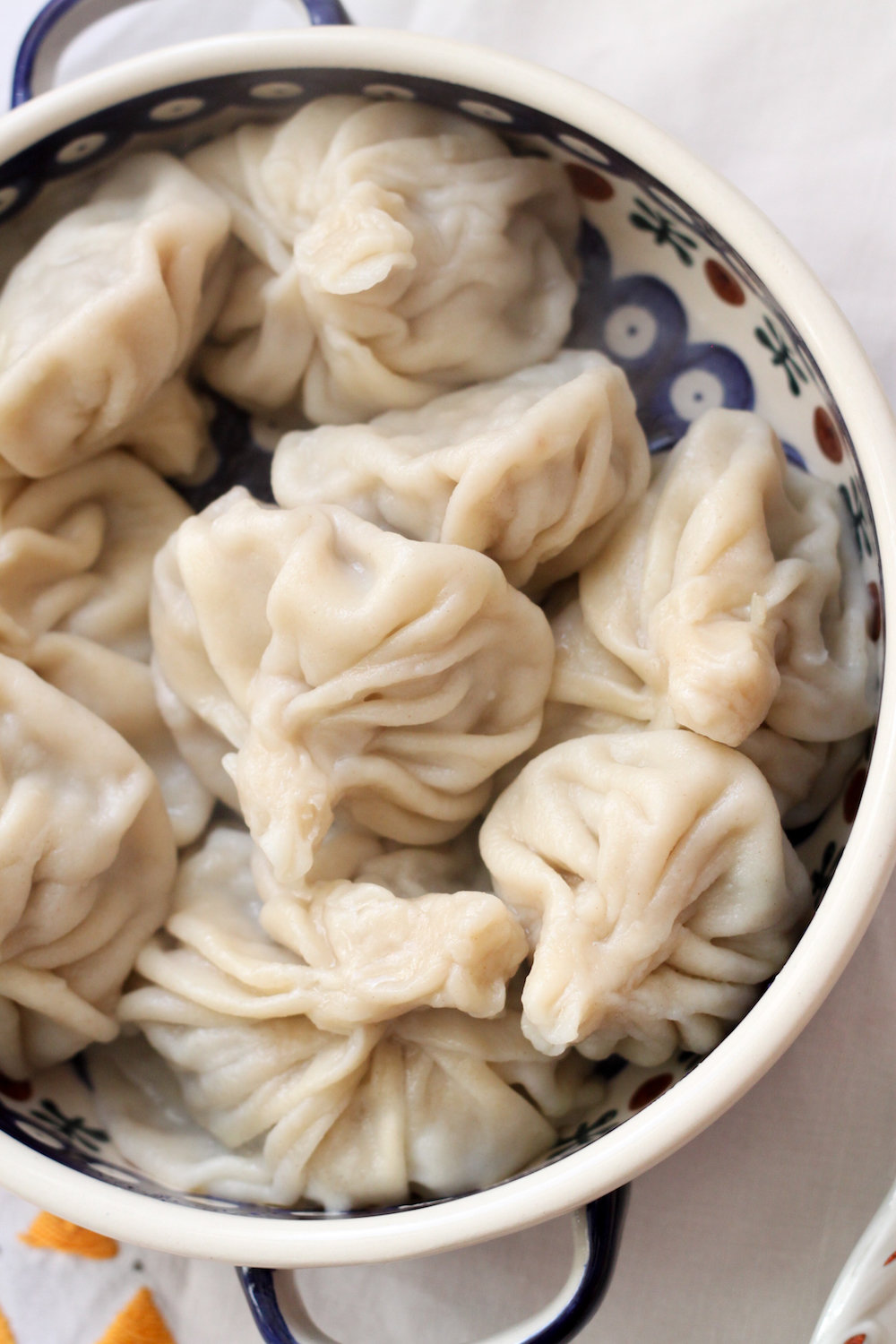
Bedecked in black pepper and slippery in our fingers, the khinkali looked like kissing cousins of their Georgian relatives. They weren’t quite as pretty or even as brothy as the ones we’d eaten there, but on a warm, springtime Saturday in Berlin, they tasted like vacation.
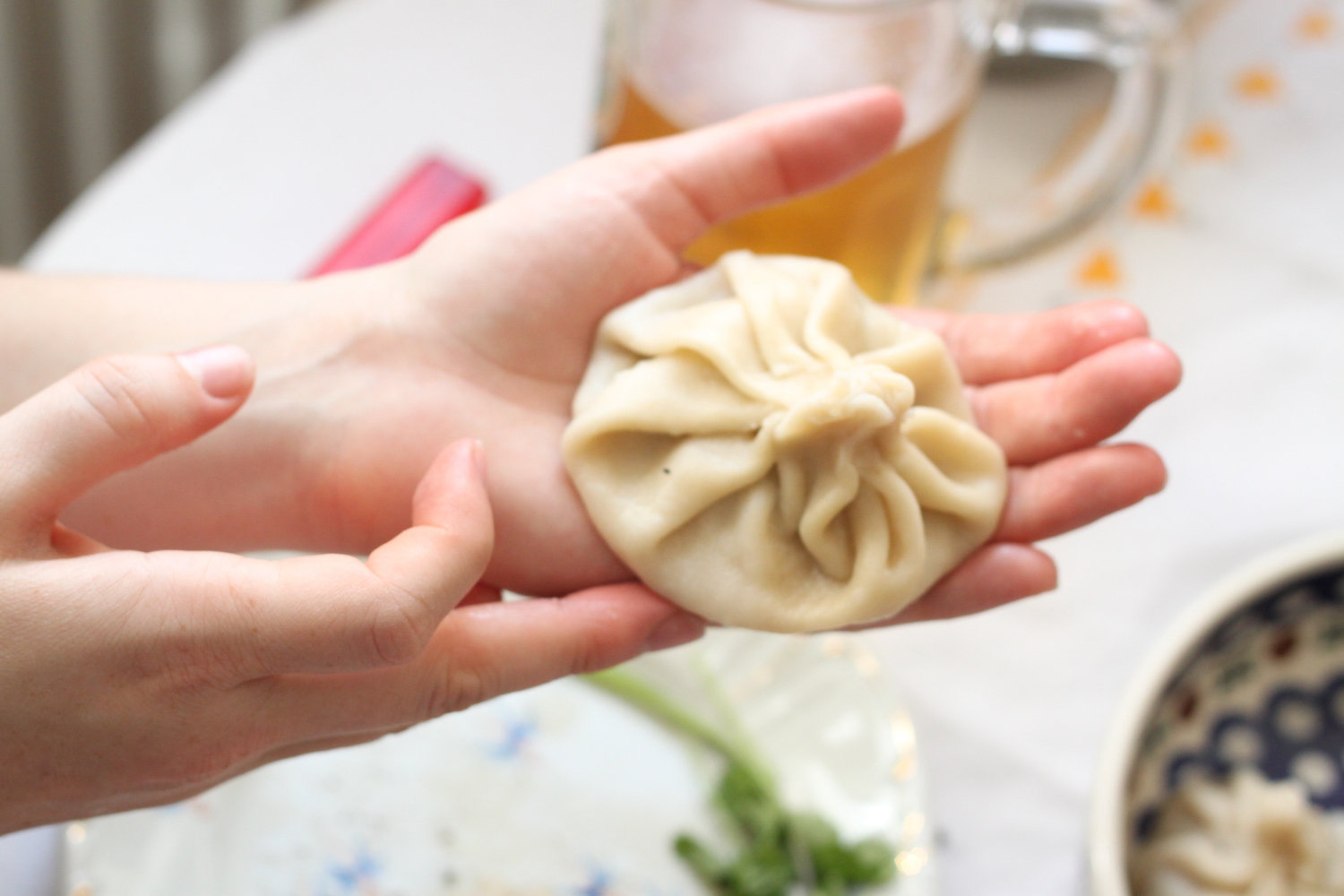
Khinkali (Georgian Soup Dumplings)
Let’s get one thing straight here: flour is your friend. Flour your work surface regularly, layer flour between the dough if you’re going to stack the rounds, and place the wrapped, uncooked khinkali on a floured surface. Basically, if things start sticking – anywhere – the answer is: flour! And don’t worry if your pleats aren’t perfect – their purpose is aesthetic more than anything else. The most important thing is to make sure your dough isn’t so thin it could burst in the water and to create a tight seal around the filling so none of the delicious broth seeps out. Makes about 30 khinkali.
For the dough:
4 cups flour
1 egg
1 ¼ cups warm water
1 ¼ tsp salt
For the filling:
1.1 lbs. (500 g) blend of ground beef and pork
2 small yellow onions, finely diced
2 tbsp. finely chopped cilantro
¼ tsp. red chili flakes
¼ tsp. ground caraway
¼ tsp. salt
¼ tsp. black pepper
¾ cup water
Freshly-ground black pepper, to serve
To make the the dough, mix flour, salt, egg, and warm water in a bowl until a shaggy dough forms. Transfer the dough to a floured work surface and knead until smooth, about 5 minutes. Add more flour if the dough seems too sticky. Wrap in plastic wrap and refrigerate for 30 minutes.
Make the filling while the dough rests: combine ground pork and beef, chopped onions, cilantro, red chili flakes, caraway, salt, and black pepper in a large bowl. Gradually add water, mashing the filling with your hands to incorporate.
Roll out the dough on a lightly floured surface to about 1/8-inch (1/2 cm) thickness. Using a glass or round cookie cutter, cut circles from the dough, and set aside. If you’re going to stack them, don’t forget to flour in between each layer, and don’t make your stacks too high.
Reshape remaining dough and repeat.
Take a round of dough, and working on a lightly floured surface, roll out the round so that the dough is thin, but not in danger of breaking. Again, don’t be afraid of flour and don’t make your stack of dumpling wrappers too high – otherwise, you run the risk of the weight of the wrappers making the bottom layers stick together. Then you have to roll them all out again, and trust me, that is annoying. Because that’s what happened to me.
Place a spoonful of filling in the center of the round of dough and crease the edges together accordion style to create pleats. Tightly pinch the dough together at the top, making sure to create a tight seal.
Bring a large pot of generously salted water to a boil. Working in batches, boil about 6 khinkali at a time until they float and the dough is tender, about 10 minutes. Remove with a slotted spoon and eat promptly, seasoned with just black pepper.
my mother’s hands move
in your fingers my fingers
shaping rounds of dough
the bread of life our lives
twisted in knots then smoothed
with hands tender soothed
the knots
My poet mother!
Sounds like David had khinkali for breakfast. Sounds good to me.
Lovely.
What’s so pleasing about your style is the way you talk about things … and illustrate things … in a gradual way. So the reader doesn’t know exactly where you’re going, but each step is interesting … and so the reader is content to be patient and walk along with you until the pieces of the puzzle all fall into place. Oh, and there are even extra pieces that may be introduced just because they came to mind and are interesting in their own right.
Looking forward to trying this. If your dumplings looked like cousins to the original, mine will look like in-laws…
Georgia is one of the most wonderful places I have ever been. The people, the food, the wine… I could go back and back, and hope to visit again soon. In the meantime, I suppose I’ll just stare at these photos for a bit: could plunge my face into one of those dumplings!
Hey, this recipe looks great! Can you make the Dumplings ahead of time and freeze or put them in the fridge before cooking them if you are not ready to cook them right away? Thanks
Freezer, definitely! Freeze them on a baking sheet, so that they don’t touch while freezing. Fridge is tricker, since the dough can get sticky; if they touch, the dough will stick, and you’ll tear holes when you try to separate them. You can put them straight into the boiling water from the freezer. Enjoy! :)